|
|
|
WESTPEX® 2024 |
||||||||||||||||||||||||||
|
Stamp Show |
||||||||||||||||||||||||||
|
Show Theme |
||||||||||||||||||||||||||
|
WESTPEX's 2015 Theme – The 100th Anniversary of the Panama-Pacific International Exposition Some Background on International Expositions Back when travel was hard and websites were a pipedream, international expositions were a popular way of promoting the industry of the fair holder as well as international trade and global travel. The first such expo was in London in 1851. It was officially called the The Great Exhibition of the Works of Industry of All Nations. Popularly it was called The Crystal Palace. |
||||||||||||||||||||||||||
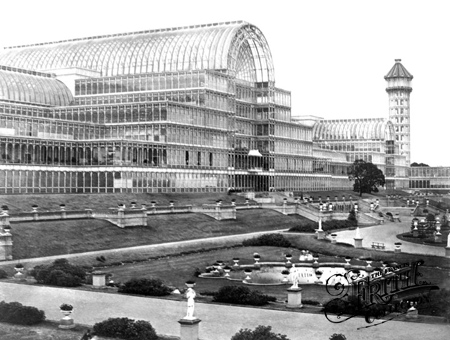 |
||||||||||||||||||||||||||
|
And popular it was. More than 14,000 exhibitors filled its 990,000 square feet. The building containing the fair was a major attraction, in its own right, Because it was constructed of newly developed cast plate glass, lighting wasn't required. London's success led quickly to imitators in Dublin, New York and Paris. By 1915 more than 40 such expositions had been held all over the world. In developing US cities like Portland, Seattle and San Francisco they often served the additional purposes of developing large tracks of land and attracting new residents. The PPIE San Francisco competed with other US cities, particularly New Orleans, for the right to host the PPIE designed to commemorate the completion of the Panama Canal and the 400th anniversary of Balboa's discovery of the Pacific Ocean. President Taft declared San Francisco the winner in 1911. San Francisco's city fathers decided to fill in the mud flats now called the Marina rather than use Golden Gate Park. |
||||||||||||||||||||||||||
 |
||||||||||||||||||||||||||
|
Dominated by the 43 story Tower of Jewels, the expo covered 635 acres. Its construction continued the dramatic resurrection of San Francisco following the earthquake and fire of 1906. |
||||||||||||||||||||||||||
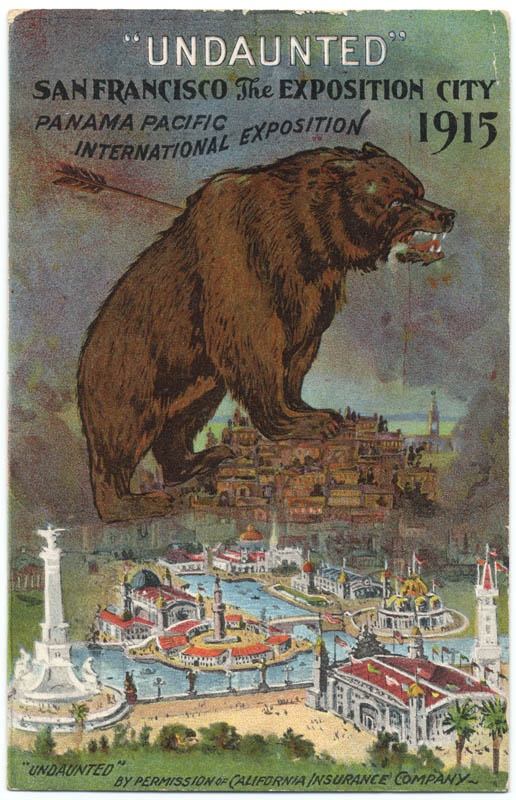 |
||||||||||||||||||||||||||
|
The buildings of the expo were designed to last only the year of the fair. Most were plaster and burlap over a wood base. Jules Guerin was hired to design a color scheme for the fair giving the buildings, sculptures and murals a unified Mediterranean/Arabian look. it was also a novel departure from the "White City" appearance of most previous expos. |
||||||||||||||||||||||||||
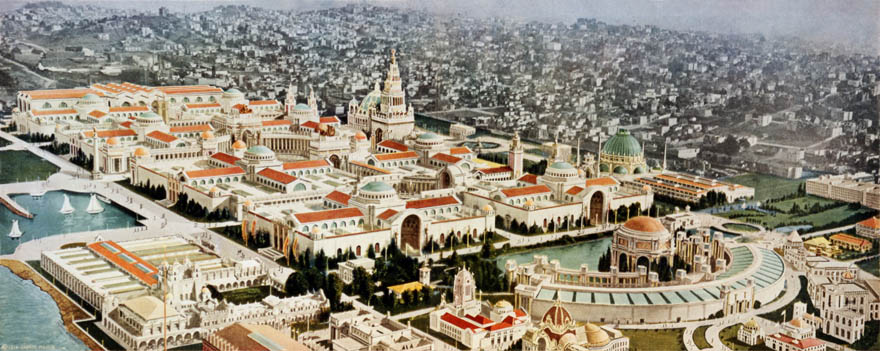 |
||||||||||||||||||||||||||
|
The lighting of the fair was also novel. Created by GE, the lighting design departed from previous expositions which used small white bulbs outlining building edges. Instead floodlights lit entire structures and a multicolor array of searchlights, in the bay, provided a dramatic backdrop. |
||||||||||||||||||||||||||
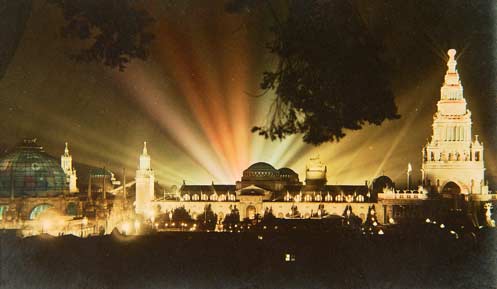 |
||||||||||||||||||||||||||
|
The exposition ran from February through December of 1915 and was a great success. All of the buildings except the Palace of Fine Arts were torn down. The Palace of Fine Arts, reconstructed in the 1960s and seismically retrofitted in 2010, still stands. |
||||||||||||||||||||||||||
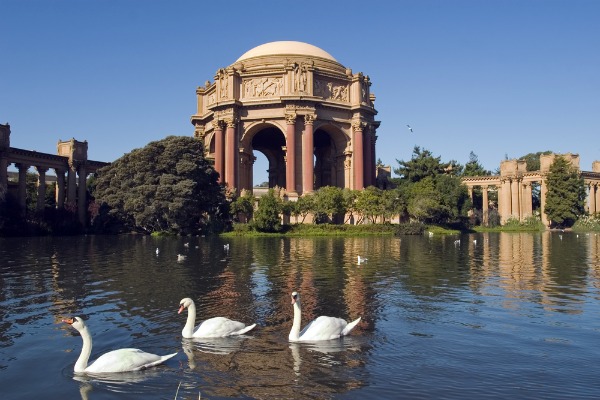 |
||||||||||||||||||||||||||